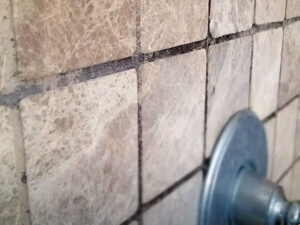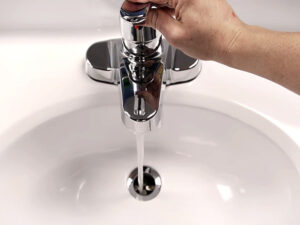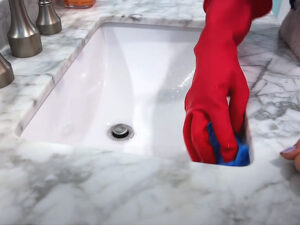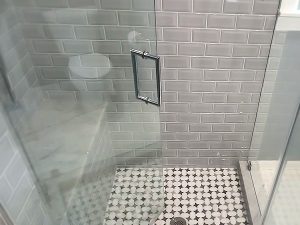Are you sick of dealing with mold and mildew on the window sill in your bathroom? I know for sure that I was. No matter how many times I cleaned it, it seemed like the stubborn growth would always find its way back. But don’t worry my fellow mold fighters! I’ve found some tried-and-true ways to get rid of mold and mildew once and for all on the window sill in my bathroom.
In this blog post, I’ll tell you about my own experience fighting off the invaders and give you tips on how to get rid of mold and mildew from your own bathroom window sill. I will walk you through the step-by-step process of getting a clean and mold-free window sill, from figuring out why mold grows to use strong but safe cleaning solutions. Get ready to say goodbye to mold and bring back the perfect state of your bathroom!
What Causes Mold and Mildew to Grow on a Bathroom Window Sill Most of the Time?
Mold and mildew like damp places with little airflow, so bathroom window sills are a great place for them to grow. Understanding what causes mold and mildew to grow on a bathroom window sill is important for getting rid of it and keeping it from coming back.
One of the main reasons is that there is too much water. Moisture from showers, baths, and sinks can build up in bathrooms, especially those that don’t have enough air. When this wetness builds up on the window sill, it gives mold and mildews the perfect place to grow. Also, if the temperature difference between the inside and outside causes condensation to form often on the bathroom window, it can encourage the growth of mold and mildew.
Lack of airflow is another cause. When there isn’t enough airflow in the bathroom, it traps wetness and makes it easier for mold and mildew to grow. This can happen if the windows are locked shut, the exhaust fans aren’t working right, or the bathroom doesn’t have any windows at all.
Leaking lines or plumbing problems can also cause the area around the window sill to get too wet, which makes it easier for mold and mildew to grow. Even small water leaks should be fixed as soon as possible to avoid more damage and mold growth.
Mold and mildew can also grow because of how people clean and take care of their homes. If you don’t clean the window sill regularly, dirt, dust, and organic matter can build up, giving mold and mildew what they need to grow. If you don’t take care of mold and mildew problems right away, they can spread and come back.
To stop mold and mildew from growing on the window sill in your bathroom, you need to deal with these underlying reasons. You can make it harder for mold and mildew to grow in your bathroom by improving ventilation, reducing wetness, fixing leaks quickly, and keeping up with regular cleaning. This will give you a clean and healthy bathroom.
Steps to Clean Mold and Mildew from Your Bathroom Window Sill
Mold and mildew on the window sill of a bathroom can look bad and be bad for your health. Don’t worry if you’re sick of having to deal with this common problem. Follow these steps to get rid of mold and mildew from the window sill in your bathroom:
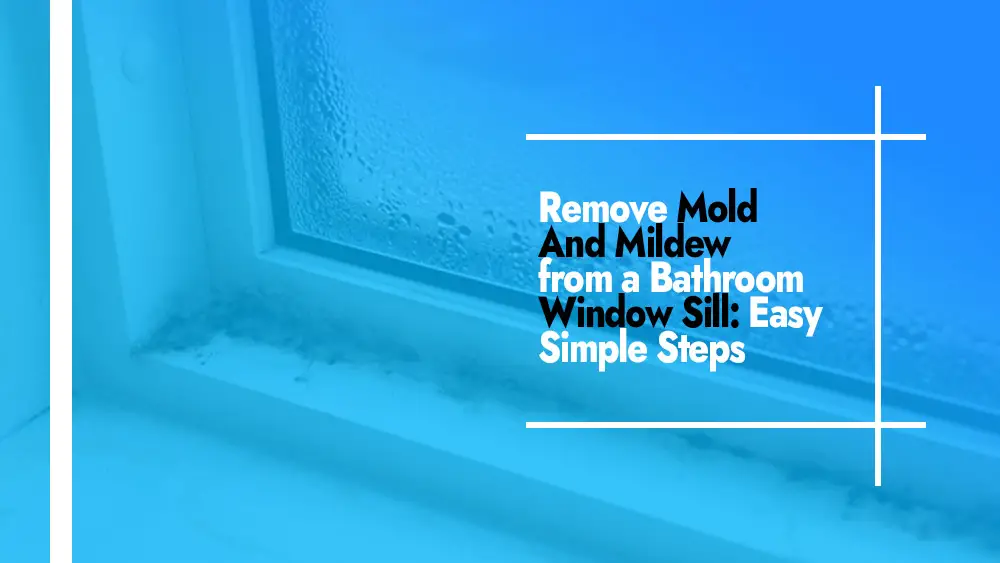
Step 1: Figure out how big the problem is
Before you start cleaning, you should take a look at how much mold and mildew have grown on your bathroom window sill. Check the area carefully to see if the mold is just on the surface or if it has spread deeper into the building. This evaluation will help you decide if you can handle the problem on your own or if you need help from a professional.
Step 2: Get the things you need
Gather the right tools to remove mold and mildew successfully. You’ll need rubber gloves, safety glasses, a dust mask, a stiff brush or scrubbing pad, a plastic scraper, a spray bottle, white vinegar, hydrogen peroxide, baking soda, liquid dish soap, and a clean cloth or sponge.
Step 3: Make sure there is enough airflow
Mold grows in places that are damp and don’t have enough airflow. Before you start cleaning, make sure your bathroom has enough airflow. Open the windows, turn on the vent fans, and if you need to, use portable fans. Having enough air will help stop mold spores from spreading and help dry the area well.
Step 4: Keep yourself safe
When mold and mildew are upset, they can send out allergens and harmful spores. Before you start cleaning, put your safety first by putting on rubber gloves, safety glasses, and a dust mask. By taking these precautions, you will be less likely to be exposed to things that could hurt you.
Step 5: Take off mold and mildew that is loose
Remove any loose mold and mildew from the window sill with a stiff brush or cleaning pad. Make sure you don’t let the germs fly into the air. Put the trash in a plastic bag and throw it away right away. This step will help cut down on the number of germs and make the cleaning process more effective.
Step 6: Clean it with a natural cleaner
Put some white vinegar and water in a spray bottle to make a safe and effective cleaning option. Spray a lot of the solution on the parts of the window sill that have mold. White vinegar is a natural substance that kills mold and stops it from growing. Give the solution about 15 minutes to get into the mold and break it down.
Step 7: Scrub and get rid of mold stains that won’t come off
After the vinegar solution has had time to work, scrub away the leftover mold stains with a stiff brush or scrubbing pad. To loosen the mold from the surface, use mild pressure and move in circles. For spots that won’t come off, use a plastic scraper to gently scrape the mold off the window sill without damaging it. Rinse the area with clean water to get rid of any vinegar solution that is still there.
Step 8: Stop mold from growing again
Take preventive steps to keep mold and mildew from coming back. Use air fans or open windows during and after showers to keep the bathroom well-ventilated. Use a combination of water and liquid dish soap to wipe down the window sill often to get rid of any moisture or residue. Also, think about painting or coating the window sill with mold-resistant paint or covering to stop mold from growing again.
By doing these things, you can get rid of mold and mildew from the window sill in your bathroom. Don’t forget to put safety and good airflow at the top of your list at all times. With a little work and regular care, you can keep your bathroom clean and free of mold.
Can I Use Bleach to Clean Mold and Mildew off the Window Sill in My Bathroom?
Bleach is a popular household cleaner, but it may not always be the best way to get mold and mildew off the window sill in the bathroom. Bleach can kill mold on surfaces that don’t have pores, like tile or glass, but it might not get rid of the problem completely on porous surfaces, like wood or painted window sills.
Bleach might help temporarily by getting rid of the obvious mold and making the stains lighter. But it doesn’t get very far into porous surfaces, so mold can quickly grow back from the inside. Also, if you don’t use bleach in a well-ventilated area, the fumes can be irritating and even dangerous.
Instead of just using bleach, it’s better to use other methods that are made for getting rid of mold and mildew. Natural cleaners like white vinegar, hydrogen peroxide, and baking soda can be better at getting rid of mold germs and stopping them from coming back. These substances are antimicrobial and can get into weak materials to kill mold and mildew where they start.
When dealing with mold and mildew, it’s important to put safety first and take steps to stop it from happening again. Make sure the bathroom has enough air flow, fix any sources of moisture or leaks, and keep up with routine cleaning. If the mold problem keeps coming back or affects a large area, it’s best to call a professional mold removal service for a full evaluation and the right treatment.
In the end, bleach might work on some non-porous surfaces, but it’s best to look into better and more thorough ways to get rid of mold and mildew on a bathroom window sill.
Are there any Natural Ways to Get Rid of Mold and Mildew or Things I Can Make Myself?
Yes, you can get rid of mold and mildew on a bathroom window sill with natural treatments and things you make yourself. Most of the time, these alternatives are safer and better for the earth than harsh chemical cleaners. Here are some famous natural remedies:
White Vinegar
Vinegar is a strong natural cleaner that kills bacteria and other germs. Fill a spray bottle with white vinegar that hasn’t been reduced, and spray it all over the moldy parts of the window sill. Let it sit for a few hours, then use a brush or sponge to clean the surface. Wash with water and dry with a towel.
Hydrogen Peroxide
Hydrogen peroxide is another good natural way to get rid of mold and mildew. In a spray bottle, mix equal parts of hydrogen peroxide and water. Spray the solution on the spots that need it, and let it sit for about 15 minutes. Use a brush or sponge to scrub away the mold, then rinse and dry the window sill.
Baking Soda
Baking soda is a mild cleaner that can be used to get rid of mold and mildew spots. Mix baking soda and water to make a paste. Use a brush to gently scrub the moldy spots with the paste. Rinse the window sill well and let it dry.
Oil of Tea Tree
Tea tree oil can be used to get rid of mold and mildew naturally because it kills fungi. In a spray bottle, mix a teaspoon of tea tree oil with a cup of water. Spray the solution on the moldy spots and let it sit for a few hours. Scrub the top, rinse it, and let it dry.
The extract of grapefruit seeds
Grapefruit seed extract is a natural cleaner that can help get rid of mold and mildew. Put two cups of water and 20 drops of grapefruit seed juice into a spray bottle. Spray the solution on the problem spots and let it sit for a while. Scrub the mold off the window sill and rinse it well.
Lemon Juice
Lemon juice is known for killing germs and having a fresh smell. Put fresh lemon juice on the moldy parts of the window sill and let it sit for about an hour. Use a brush or sponge to scrub the surface, then rinse and dry it.
No matter what natural remedy or homemade answer you choose, you should always wear gloves and make sure there is enough airflow while cleaning. Always test the solution on a small, unnoticeable part of the window sill first to make sure it doesn’t damage or change the color of the sill.
Remember that prevention is the best way to stop mold and mildew from growing. Make sure your bathroom has enough air flow, fix any leaks or sources of water, and clean and dry the window sill frequently. Mold and mildew can be removed from your bathroom window sill in an eco-friendly and safe way by using these natural treatments and keeping the area clean and dry.
Final Thoughts
In conclusion, removing mold and mildew from a bathroom window sill takes hard work, the right cleaning methods, and the right cleaning products. By doing what this guide tells you to do, you can get rid of mold and mildew from your bathroom window sill and keep them from coming back.
The first steps are to figure out how bad the problem is, get the tools you need, make sure there is enough airflow, and protect yourself. The hard-to-remove growth can be stopped by removing any loose mold, adding a natural cleaner like white vinegar, scrubbing, and rinsing. To keep mold and mildew away, it’s also important to take preventive steps like better ventilation, fixing leaks, and keeping up with regular cleaning.
Bleach might not be the best way to clean porous surfaces, and natural treatments like vinegar, hydrogen peroxide, baking soda, tea tree oil, and lemon juice can do the job just as well and are safer.
By using these cleaning methods and taking steps to stop mold and mildew from growing, you can keep your bathroom window sill clean, healthy, and mold-free. Remember that consistency is the key to keeping a mold-free setting, so keep an eye out for signs of mold and mildew and deal with them right away.




